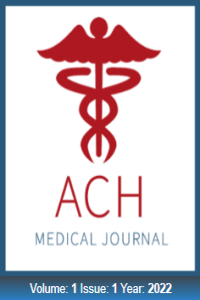The Need for Emergency Case Management in Family Medicine: A Capital City Case
The Need for Emergency Case Management in Family Medicine: A Capital City Case
Family Medicine, Emergency Emergency Case Management, Triage, Specialty Training Curriculum,
- Başlangıç: 2022
- Yayıncı: Ankara Şehir Hastanesi
Bedri SAKCAK, Ramazan DENİZLİ, Nihat FARİSOĞULLARI, Zahid AĞAOĞLU, Atakan TANACAN, Özgür KARA, Dilek SAHİN
Erhan Renan UÇAROĞLU, Ufuk Turan Kürşat KORMAZ, Yusuf VELİOĞLU, Kemalettin ERDEM
The Role Of Psychiatric And Demographic Factors In The Etiology of Hyperemesis Gravidarum
Guldeniz TOKLUCU, Bilge DOĞAN TAYMUR, Arzu TEKİN, Osman Samet GÜNKAYA, Ayşegül BESTEL, Nıyazı TUG
A Retrospective Analysis of Cases of Non-Immune Hydrops Fetalis in A Tertiary Center
Merve ÖZTÜRK AĞAOĞLU, Atakan TANAÇAN, Zahid AĞAOĞLU, Özgür KARA, Dilek SAHİN
The Effect of Ticagrelor on Survival of Skin Flap in Rat Model
Mehmet TAPAN, Ali YILDIRIM, Hasan Murat ERGANİ
Bergen LALELİ KOÇ, Betül AKGÜN AKTAŞ, Osman Onur ÖZKAVAK, Atakan TANACAN, Dilek SAHİN
Silent Pneumoperitoneum in a Major Burn Earthquake Survivor: Sigmoid Diverticular Perforation.
Merve AKIN, Tezcan AKIN, Ayse KARABAĞLI, Ahmet Çınar YASTI
Classification Of Post COVID-19 Pulmonary Findings Evaluated By Computed Tomography
